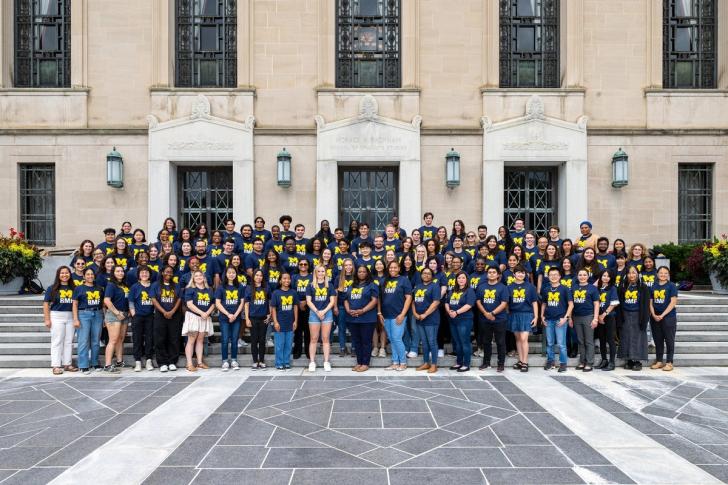Click here to read the original Action Item
Progress to Date
Once a general application structure was established, Rackham selected five doctoral programs across its four scholarly divisions on the Ann Arbor campus to function as “‘pioneer sites”’ in a pilot of the application process. These included:
- Pharmaceutical Sciences (College of Pharmacy; Div 1)
- Biophysics (College of Literature, Science, and the Arts, Div 2)
- Engineering and Education Research (College of Engineering, Div 2)
- Interdepartmental Program in Ancient History (College of Literature, Science, and the Arts, Div 3)
- Classical Studies (College of Literature, Science, and the Arts, Div 4)
Based on stakeholder feedback, the application and the review process were both revised. A second, larger survey will be conducted in Fall 2024. Rackham’s sustained engagement with programs through the application process is important since current doctoral programs are required to demonstrate their past and planned support of RMF climate and culture goals.
A second advance was the implementation of a new fellowship program for advanced graduate students and their faculty mentors. The PACE (Partnerships for Access, Community, and Excellence) Fellowship recognizes accomplished doctoral students and faculty mentors with a demonstrated commitment to program climate and student success. During Year 1, Rackham recognized 20 student-faculty pairs in the inaugural round.
Rackham also made substantive progress in realigning both criteria and the selection process to achieve RMF goals. Topping the list was development of a rubric that clearly describes the evaluative criteria and selection processes for allocations. The rubric also indicates where evidence related to the criteria can be found in a student’s Rackham application. In addition, a new RMF evaluation guide is available to aid faculty and staff in identifying RMF candidates and preparing nominations.
Lastly, Rackham conducted two workshops, hosted an RMF information session, held meetings with individual programs and created a guide to help identify outstanding nominees. As a result, feedback during the first year of this wide-scale change was extremely positive.
Responsible Unit: Rackham Graduate School
